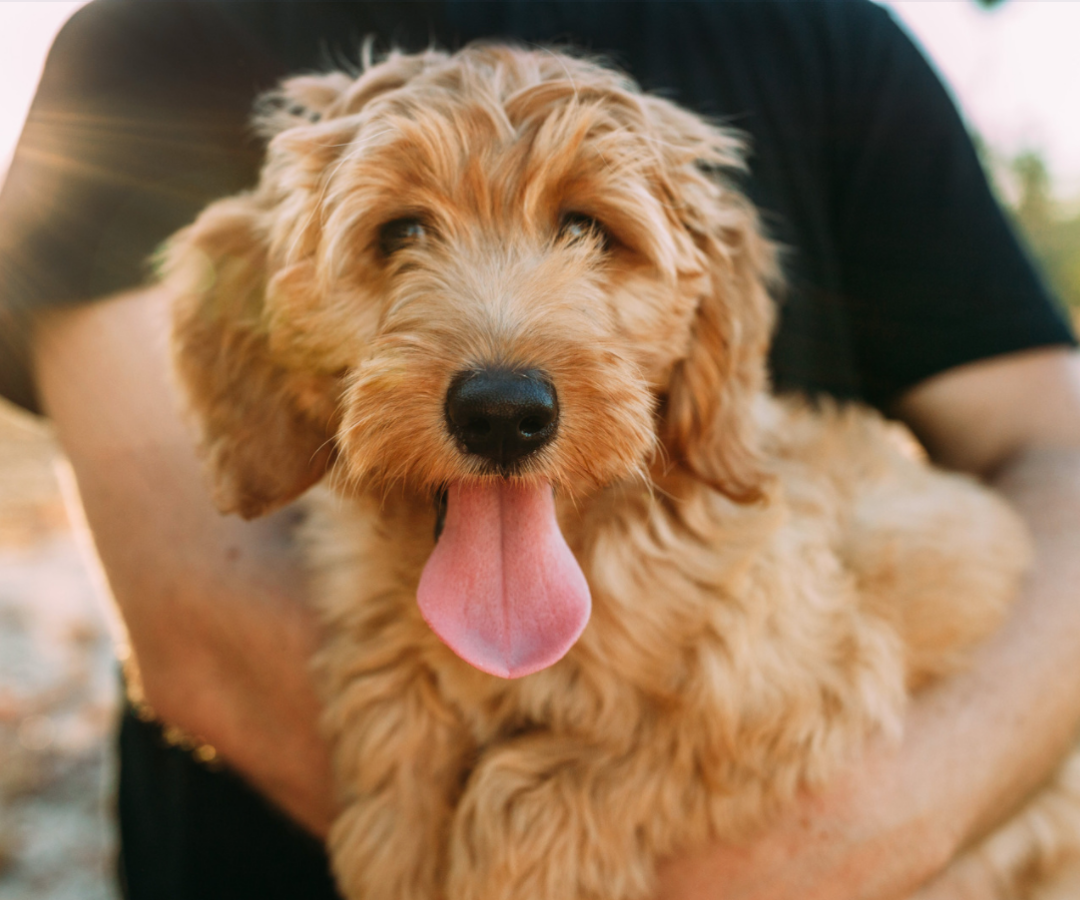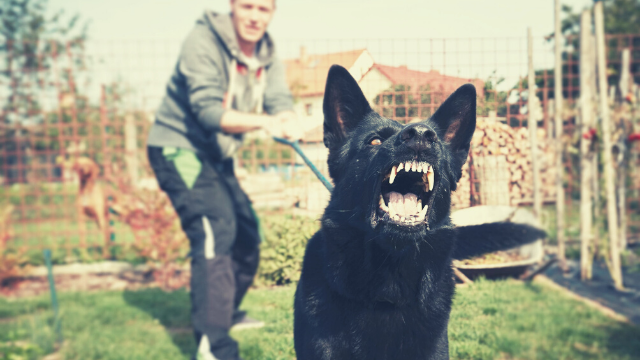[Episode 24]
What is Reactivity and Leash Aggression?
Leash aggression and reactivity is one of the most common problems that dog owners face.
In my private training business, about 80% of my cases are reactivity, pre-covid puppy craz.
Both of my dogs were reactive. Sadie was so bad that she would redirect her frustration at Robi and snap at him. It was extremely frustrating and embarrassing to have my dogs behave this way. I was also worried that they might get out of their collars or harnesses and run into the street and get hit by a car. Walking my dogs was so stressful that I cried a few times. I couldn’t understand why there were doing this and how to stop them. I tried a lot of wrong solutions first, but ultimately found the right way to change them. Now I enjoy calm relaxing walks with my dogs.
Today you’re going to learn the basics about reactivity. Teaching your dogs to be calm on a walk starts with your knowledge about the problem. Are you ready?
What is reactivity? What does it mean when a dog is reactive or leash aggressive?
Reactivity is when a dog overreacts to something in his environment. This over reactivation will look like lunging, barking, biting, snappy or growling. Notice that I didn’t say dominance because dominance doesn’t describe the behavior that you see, it doesn’t tell me what the dog is doing.
Most reactivity happens when a dog is on leash on a walk. Leash aggression or leash reactivity is another name for reactivity, although your dog doesn’t have to be on the leash to over react. Most of the time reactivity happens on the leash. A dog could be reactive to a bike, a motorcycle, a skateboarder, a dog or a person.
Most reactivity happens when a dog is on leash and on a walk. Leash aggression or leash reactivity and reactivity all describe the same thing, lunging and barking on the leash.
Some people confuse leash aggression with aggression and it’s not the same. Yes, a dog that is lunging and barking is behaving aggressively, that doesn mean he will bite. The definition of aggression should be when a dog has bitting another dog or person. Some dogs that lunge and bark are fine with other dogs when they’re off the leash. Other reactive or leash aggressive dogs are not.
All dogs have the capacity to bite if they feel threatened.
But when your dog is worried or frightened, he’s going to react and he’s going to overreact because he’s on the leash and he can’t get away from what he’s worried about. And some people say, you know, reactivity is when your dog overreacts even saying overreact is putting our human response on the animal, right? We’re saying that the dogs overreacting by our standard, by our human standard, I don’t want my dog to do that. He must be overreacting, but in the wild, this is how dogs communicate. This is how dogs live. Dogs were bred to live in our home and walk on a leash. We forget that. So even saying overreact, you know, again, that’s a human response, but we’re humans. And we have to use some of our human words to uncover and unpack these issues and learn about our sweet little animals, our dogs that we love.
Is leash aggression the same as aggression?
Yes and no. Some people confuse aggression with aggressive behavior. Aggressive behavior is barking, lunging and growling.
Aggression, the way I define in my dog training business is a bite history. Specifically has a dog bitten another dog or person before. There may be times when I define aggression and biting more than once.
I do NOT get hung up on either of these words. Some people get worried and consumed by IF they have an “aggressive dog.” Don’t do that. You need to look at the action specifically.
I don’t want to get too deep into aggression here, but I want you to know that just because your dog is lunging and barking doesn’t mean he is aggressive but it also doesn’t mean that he won’t bite.
What causes reactivity? Can a dog be born reactive?
No, I don’t think that is the case at all. Now, there are some people that say yes, it’s genetic but barking and lunging are a dog’s normal response to stressful situations in the wild. We put a dog on a leash and we want him to behave but when he’s worried or frightened he’s going to react or overreact. Even saying overreact is putting our human response on an animal.
The problem with saying that something is genetic or not is the implication it has for you. When most people hear that something is genetic, they think they’re stuck and it can’t change. Cancer is genetic in my family, why should I try to fight it or stop it? That’s a ridiculous statement, right. Genes and chromosomes function or stay dormant due to environmental factors.
The #1 cause of reactivity Inadequate socialization ON THE LEASH.
When I first became a dog trainer they would say experts, they meaning other experts, would say that reactivity is inadequate socialization. And that is true. However, most socialization puppy classes, and you already know if you’ve been listening to this podcast, that socialization is a developmental stage between three to 12 to 16 weeks old. Most puppy socialization classes are off leash. Most reactivity occurs on leash. They are two totally different circumstances, do you see that? You’re socializing your puppy to other dogs in class OFF the leash and reactivity occurs on the leash. You need to socialize your puppy on the leash. I don’t recommend leash greeting either, that’s not socialization on the leash You need to teach your dog to be calm and confident when he see a dog on the leash. We have a great exercise and lesson in The Dog Academy that does this called Focus Around Distractions. It’s the same way you would socialize your dog to other dogs on leash. It’s a great lesson that ALL puppies should do especially if you want to avoid having a reactive dog. What you will learn in this one lesson is worth the price of The Dog Academy.
Also remember that socialization doesn’t just involve dogs. It involves creating a positive experience for your dog with people, places, items, sounds, different flooring, etc. Since we’re only talking about reactivity we’re focused on dogs, but I wanted to make that clear that socialization goes beyond dogs.
In this podcast episode we also talk about the two causes of reactivity, fear and excitement. You can listen to this episode to get more information.
Can it be cured?
You can teach your dog to be calm when he sees another dog or a trigger, however once your dog is reactive, he will always be reactive. Think of it like cancer, you don’t get cured, you go into remission. It’s very similar for reactivity. Both of my dogs will always be reactive but they almost never bark at a dog. There may be a certain dog that they whine at or give a little bark, but nothing like what happened before. I would say that most dogs can improve by 98%. That’s a great outcome for those of us that have reactive dogs.
Can my puppy become reactive?
Yes, absolutely. If you have a puppy or a dog with minor fears, then I highly recommend that you look into The Dog Academy. The average life span of a 40lb dog is 12 years. If you want those 12 years to be fun and easy, then it’s best to invest in the right training program now. It’s never too late to start.
If you already have a reactive dog then I recommend that you look into the Barkaholics Program. This program gives you a 6-week plan to change your dogs lunging and barking behavior to calm.
Thank you for reading and listening today.
If you have any questions, come find me on Instagram @allaboutrainingdogs.com
Follow us on Instagram to see our daily training lessons.
You’ll learn a lot and get a dog that listens.


FREE MASTERCLASS
3 STEPS TO GET YOUR DOG TO LISTEN
Most struggling dog owners spend hours watching videos and reading blog posts that don’t address the cause of their problem. They waste time focusing on the symptoms and then think their dog is difficult or can’t change when they don’t see results. If you’re ready to finally see change, then sign up and watch this FREE Masterclass.


